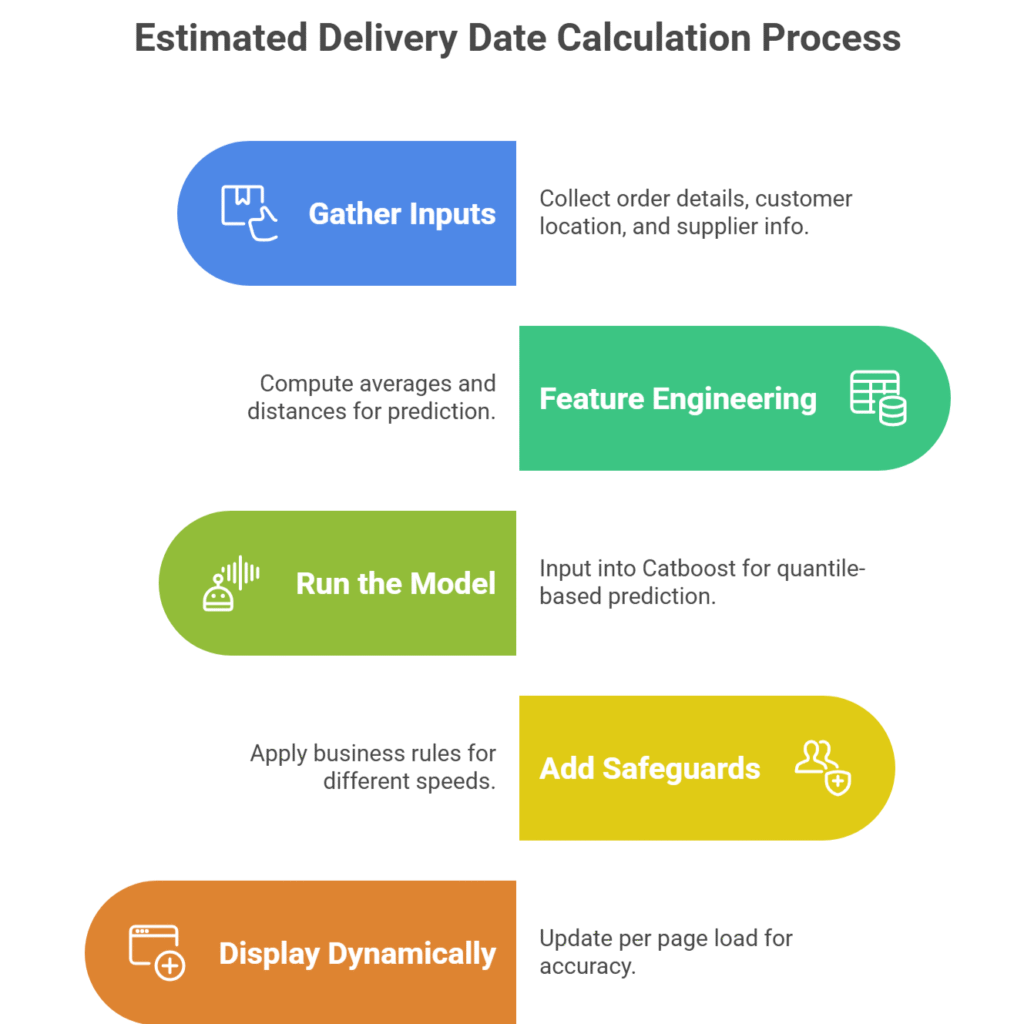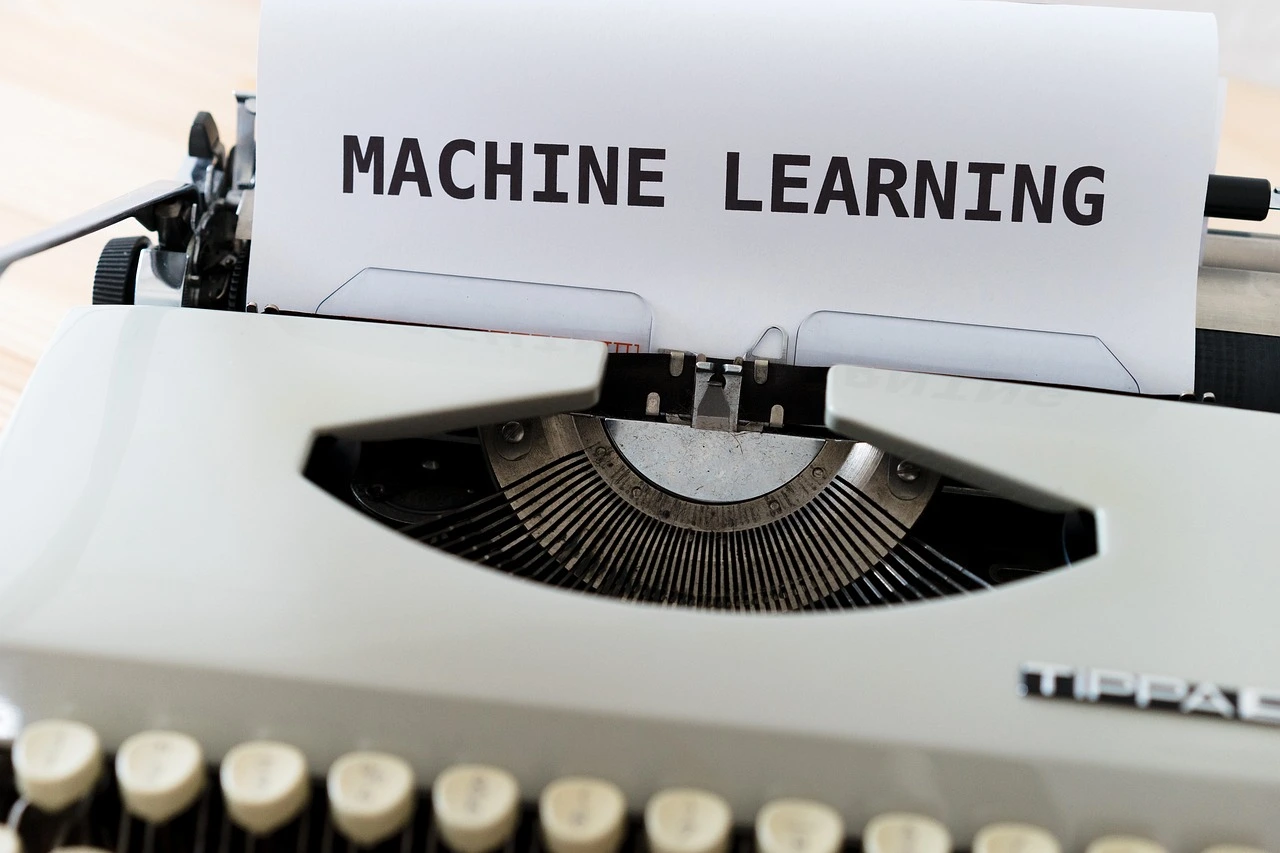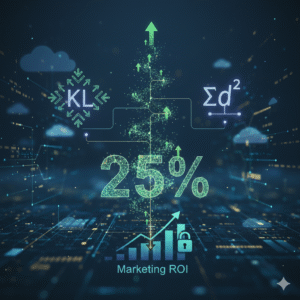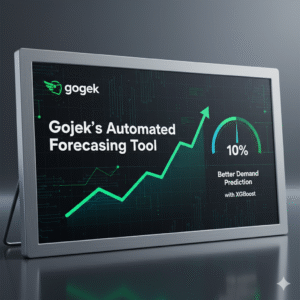Table Of Contents
- Introduction: The Hidden Power Behind Your Online Order's Arrival
- What Is Delivery Date Prediction and Why Does It Matter?
- Key Factors Influencing Delivery Time Accuracy in Ecommerce
- Models Used for Predicting Delivery Dates: A Deep Dive into Gradient Boosted Decision Trees
- How to Calculate Estimated Delivery Dates for Online Orders
- How Can Retailers Reduce the Gap Between Promised and Actual Delivery Times?
- Features Required for Accurate Delivery Time Machine Learning Models
- Future Developments: Where Delivery Date Prediction Is Headed
- FAQs
- Conclusion
Introduction: The Hidden Power Behind Your Online Order's Arrival
Imagine scrolling through an online store, spotting the perfect couch, and seeing “Arrives in 3-5 days.” That simple phrase can make or break your decision to click “buy.” In the fast-paced world of ecommerce, delivery date prediction isn’t just a nice-to-have—it’s a game-changer. It blends data, technology, and a bit of foresight to promise customers when their package will land on their doorstep. But what happens when those promises fall short? Frustrated shoppers, lost trust, and dipped sales. On the flip side, nailing it leads to happier customers who keep coming back.
Drawing from real-world innovations like those at major retailers, this post dives deep into delivery date prediction. We’ll explore how machine learning delivery prediction is revolutionizing the process, making estimated delivery dates (EDD) more precise without speeding up trucks or warehouses. Whether you’re an ecommerce owner, a supply chain manager, or just curious about the tech behind your next delivery, stick around. We’ll unpack predictive analytics for delivery, share actionable tips, and reveal how last mile delivery prediction can supercharge your business.
What Is Delivery Date Prediction and Why Does It Matter?
At its core, delivery date prediction is the art and science of forecasting when an order will arrive based on various factors. It’s not a wild guess—it’s a calculated estimate that considers everything from supplier speed to shipping routes. In ecommerce, this translates to ecommerce delivery estimates shown on product pages or during checkout, helping customers plan and build excitement.
Why does it matter? Studies show that 70% of online shoppers abandon carts if delivery times seem too long or unreliable. Accurate order delivery tracking accuracy builds trust, while missed deadlines can slash repeat business by up to 20%. Think about it: if a retailer promises fast shipping but delivers late, customers feel let down. Reliable shipping estimates, however, can increase conversion rates by 10-15%, as seen in industry reports from McKinsey. It’s all about balancing speed and reliability—promise too aggressively, and you risk disappointment; pad too much, and you lose sales to quicker competitors.wayfair.com
In practice, delivery promise optimization means using data to fine-tune those estimates. For instance, a furniture retailer might predict longer times for bulky items but shorter for small parcels. This isn’t just about customer satisfaction; it’s a direct line to revenue. By closing the gap between promised and actual times, businesses see measurable lifts in sales and loyalty.
Key Factors Influencing Delivery Time Accuracy in Ecommerce
Delivery time estimation isn’t magic—it’s driven by a web of interconnected elements. Understanding these helps retailers refine their systems for better predictive analytics for delivery.
- Supplier Performance: How quickly a supplier processes and ships orders is crucial. Historical data on average fulfillment times provides a baseline.
- Geographic Distance: The physical miles between warehouse and customer directly impact transit. Tools like zip code mapping calculate this in real-time.
- Temporal Variables: Weekends, holidays, and even time of day affect timelines. Ordering on a Friday? Expect delays if suppliers close over the weekend.
- Order Details: Item size, weight, and type matter. Small parcels via standard carriers move faster than large freight.
- External Disruptions: Weather, strikes, or carrier capacity can throw off estimates. Integrating real-time data helps mitigate this.
Current trends show ecommerce giants using AI to factor in these, reducing inaccuracies by 30%. For example, during peak seasons like Black Friday, supply chain delivery insights from past years prevent overpromising.
Models Used for Predicting Delivery Dates: A Deep Dive into Gradient Boosted Decision Trees
Machine learning takes delivery time estimation from static rules to dynamic forecasts. Traditional methods sum up fixed components—like supplier deadlines plus transit—but miss nuances. ML, via predictive analytics for delivery, learns from vast datasets to predict end-to-end.
Here’s how it shines:
- Holistic View: It connects dots across the supply chain, spotting patterns humans overlook.
- Real-Time Adaptability: Features like current time or holidays adjust predictions on the fly.
- Quantile Loss for Balance: This optimizes for speed at fixed reliability, like trading precision in classifications.
A case study: A major ecommerce player halved the gap between promises and actuals using ML, boosting conversions without touching logistics. Tips for implementation? Start with clean historical data, test on past holidays, and weigh recent trends for reactivity.
How to Calculate Estimated Delivery Dates for Online Orders
Calculating EDDs involves blending data and models. Step by step:
- Gather Inputs: Collect order details, customer location, and supplier info.
- Feature Engineering: Compute averages (e.g., recent supplier ship times) and distances.
- Run the Model: Input into a GBT like Catboost for a quantile-based prediction.
- Add Safeguards: Apply business rules for different speeds—faster for small items.
- Display Dynamically: Update per page load for accuracy.
Tools? Open-source like Catboost keep costs low. For accuracy, integrate real-time data in delivery date prediction, such as carrier APIs. Example: If distance is 500 miles, add 2-3 days; factor in variability for reliability.

How Can Retailers Reduce the Gap Between Promised and Actual Delivery Times?
Closing that gap is key to delivery promise optimization. Strategies include:
- End-to-End Modeling: Ditch segmented approaches for unified ML predictions.
- Feature Focus: Prioritize generalizable inputs like distances over niche IDs.
- Training Tweaks: Use recency weighting to balance old and new data.
- Custom Losses: Tailor for speed groups, ensuring fast items get aggressive EDDs.
Can Predictive Analytics Make Shipping More Reliable for Customers?
Yes, predictive analytics for delivery ensures 90%+ on-time rates by anticipating delays. It boosts reliable shipping estimates, reducing cart abandonment and building trust. Customers love transparency—it’s like tracking a package in real-time.
Should Ecommerce Businesses Show Estimated Delivery Dates During Checkout?
Definitely. Showing EDDs at checkout reassures buyers, with 60% preferring sites with clear timelines, per studies. Accurate estimates prevent distrust; ML ensures they’re reliable.
Are Delivery Date Predictions Affected by Holidays or Weekends?
Yes, holidays and weekends disrupt timelines due to closures. Models add buffers using temporal features. Pre-Christmas EDDs, for instance, might extend by 2-4 days based on supply chain delivery insights.
Features Required for Accurate Delivery Time Machine Learning Models
Top features:
- Supplier lead time averages and variability.
- Distance metrics for last mile delivery prediction.
- Temporal data (day, time, holidays).
- Order specifics (size, type).
These enable generalization, onboarding new suppliers fast.
Future Developments: Where Delivery Date Prediction Is Headed
The field evolves fast. Expanding to international markets or warehouse-sourced orders is next. Advanced models like transformers could push accuracy higher, inspired by ride-sharing tech. Imagine predictions factoring live traffic or inventory—it’s coming.
Tools to Boost Conversion Rate with Accurate Delivery Estimates
Leverage ML platforms like AWS SageMaker for predictions. Pair with A/B testing tools to measure lifts. Gradient boosted decision trees delivery models excel here, turning data into dollars.
Impact of Delivery Prediction Accuracy on Customer Satisfaction
High accuracy in delivery date prediction directly lifts satisfaction. A 1-day reduction in promised times can boost sales 5%, per industry data. Misses erode trust—customers are 4x less likely to return. Real scenario: Accurate EDDs during pandemics kept loyalty high amid disruptions.
What is delivery date prediction and why does it matter?
It’s forecasting arrival times to enhance trust and sales in ecommerce.
What factors influence delivery time accuracy in ecommerce?
Suppliers, distances, timing, and disruptions.
How does machine learning improve delivery time estimation?
By learning correlations for precise, adaptive forecasts.
How can retailers reduce the gap between promised and actual delivery times?
Through end-to-end ML and smart features.
Can predictive analytics make shipping more reliable for customers?
Yes, by anticipating issues.
Should ecommerce businesses show estimated delivery dates during checkout?
Absolutely, for better conversions.
Are delivery date predictions affected by holidays or weekends?
Yes, models adjust for them.
FAQs
Conclusion: Unlock Better Deliveries Today
Delivery date prediction, powered by machine learning, isn’t just tech—it’s a customer promise keeper. By honing ecommerce delivery estimates, you drive satisfaction and sales. Start small: Audit your current system, integrate key features, and test ML models. The payoff? A smoother supply chain and loyal shoppers. What’s your next step in mastering this?
Visit CareerSwami for More.


















